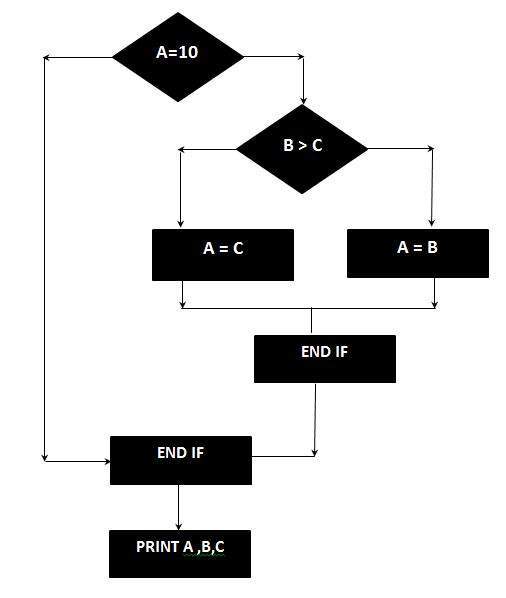
- Software Testing Dictionary
- Home
Cyclomatic Complexity
What is Cyclomatic Complexity?
Cyclomatic complexity is a source code complexity measurement that is being correlated to a number of coding errors. It is calculated by developing a Control Flow Graph of the code that measures the number of linearly-independent paths through a program module.
Lower the Program's cyclomatic complexity, lower the risk to modify and easier to understand. It can be represented using the below formula:
Cyclomatic complexity = E - N + 2*P where, E = number of edges in the flow graph. N = number of nodes in the flow graph. P = number of nodes that have exit points
Example :
IF A = 10 THEN IF B > C THEN A = B ELSE A = C ENDIF ENDIF Print A Print B Print C
FlowGraph:

The Cyclomatic complexity is calculated using the above control flow diagram that shows seven nodes(shapes) and eight edges (lines), hence the cyclomatic complexity is 8 - 7 + 2 = 3
Advertisements